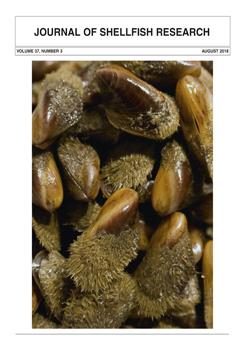Natural stocks of the Asian clam Corbicula fluminea (Müller, 1774) provide an important food source predominantly in Southern Asia. It is, therefore, important not only to assess the sustainability of natural stocks, but also to facilitate aquaculture efforts of this species. This study investigated the growth and survival rate of C. fluminea in bottom net culture over 13 mo in Çine Creek, Aydın, Turkey, in a temperate Mediterranean climate zone. Water temperature ranged between 10 and 24°C and food availability (measured by concentrations of chlorophyll-a (Chl-a) and suspended particulate organic matter) peaked during the autumn and spring. The final shell length (SL) and total body weight of C. fluminea (mean ± SE) were 29.02 ± 0.5 mm (initially 23.76 mm) and 12.17 ± 0.5 g (initially 6.65 g), respectively. Maximum growth rates were significantly higher during the autumn and spring months. A strong positive correlation was found between the availability of food (Chl-a) and total particulate matter concentrations and growth rates (in terms of SL and total weight). Survival was high (97%) by the end of the study and environmental conditions in Çine Creek supported good growth of clams. The species Corbicula fluminea, either as a native or introduced species, can be considered as a promising candidate species for the diversification of aquaculture in the region.
How to translate text using browser tools
1 August 2018
Growth of the Asian Clam Corbicula fluminea (Müller, 1774) Cultured in Çine Creek, Aydin, Turkey
Serpil Serdar
ACCESS THE FULL ARTICLE

Journal of Shellfish Research
Vol. 37 • No. 3
August 2018
Vol. 37 • No. 3
August 2018
Asian clam
Corbicula fluminea
growth
survival
Turkey




